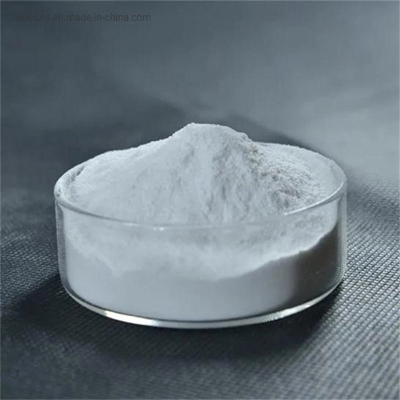Study on modern pharmacology of Gymnema sylvestre
-
Last Update: 2020-04-03
-
Source: Internet
-
Author: User
Search more information of high quality chemicals, good prices and reliable suppliers, visit
www.echemi.com
2015-08-10 classification: efficacy and action: 0 person commented that Gymnema sylvestre (Retz.) Schult, a plant in the family rotundiaceae, was used as medicine Evergreen woody vine, about 3M long Light yellow green, branches and inflorescences pilose Leaves opposite, petiole short, egg or oblong, 2-7cm long, 2-3.5cm wide, apex short pointed or blunt, base narrow or round, both sides only pubescent on veins 5-7 families have small, light yellow flowers, axillary cymes, 1.5cm long, calyx 5-lobed, apex blunt, corolla with 5 fleshy scales, alternate with flower blast lobes The pods are 4-9cm long and 2cm wide at the base The seed has white coat, which is about 3.5cm long The flowering period is from May to January, and the fruiting period is from October to January of the next year Study on modern pharmacology of Gymnema sylvestre It is found in modern research that the main component of Gymnema sylvestre which plays a role in inhibiting sweetness is gymniac acid, which can be used to treat diabetes, hyperfunction, hypoglycemia, anemia, hypercholesterolemia, gastric dysfunction, dyspepsia, obesity and weight-related diseases Now many products have been launched, such as anti hyperglycemia, anti caries Tooth drinks and all kinds of diet food 1 Hypoglycemic effect: gymniac can inhibit the absorption of glucose, significantly inhibit the rise of blood glucose, and reduce the release of insulin Gymniac can also inhibit the absorption of maltose, its IC50 It is 0.85mg/ml Qin Junjia, et al Gave 1659 / kg and 339 / kg of Gypsy compound granules (Gypsy, hawthorn, silkworm chrysalis, etc.) respectively to the stomach of experimental diabetic mice for 14 consecutive days The results showed that the high and low doses of the granules could obviously resist hyperglycemia caused by alloxan The main mechanism of hypoglycemia is to protect islet cells and promote the recovery and regeneration of islet B cells Fimbriatic acid can effectively inhibit the absorption of intestinal oleic acid The inhibition was dose-dependent and reversible The degree of inhibition and recovery process are very similar to glucose absorption Taurocholate can not affect the inhibition effect of fimbriatic acid on oleic acid absorption, but can reduce its concentration to promote the recovery of inhibition These findings are helpful to understand the mechanism of wuboot leaf acid in the treatment of diabetes and obesity 2 Inhibition of sweetness reaction: gymniac can cause taste loss, and the inhibition rate of 8 sweeteners, such as fructose, sucrose, stevioside and xylitol, is 77% Wuboot Teng polypeptide can significantly inhibit the sweetness of lactose, maltose, saccharin, etc., with the inhibition rate of 40% - 50% Animal experiments showed that the peptide could stimulate the salivary gland to secrete the peptide binding protein and selectively inhibit the response of tympanic nerve to sucrose 3 Anti caries effect: gymniac can obviously inhibit the activity of glucosyltransferase, block the synthesis of extracellular water-insoluble glucan of Streptococcus mutans, inhibit the formation of dental plaque, make the cariogenic bacteria lose the cariogenic environment, so as to achieve the anti caries effect The combination of glycyrrhizin and glycyrrhizin can enhance the anti caries effect and reduce the sweetness of the latter 4 Lipid lowering effect: rats were administrated with Gymnema gymnoides extract (containing GA 3633mg / g) 10g / kg for 22 days GA could increase the content of cholesterol, total cholic acid and total steroids The results showed that the compound granules of Gypsy can significantly reduce the TG (total cholesterol) and TC (triacylglycerin) values of the Fed hyperlipidemia rats It is speculated that its lipid-lowering effect is related to the inhibition of endogenous cholesterol synthesis, the promotion of cholesterol reverse transport, and the inhibition of liver lipoprotein intake I clinical research shows that GA has the effect of reducing blood lipid, TC and free fatty acids in diabetic patients High dose of fimbriatic acid can increase the secretion of bile acid caused by fecal cholesterol and bile acid in rats 5 Other effects: Gymnema sylvestre can inhibit the contraction of small intestine circular muscle caused by high concentration of K +, which may be related to the participation of nitric oxide and endothelial hyperpolarizing factor Gymnema sylvestre has strong antioxidant activity, and its effect is similar to vitamin E Pectins in Gymnema sylvestre inhibited histamine release from mast cells Gymnema sylvestre has anti-inflammatory effect and can inhibit cell adhesion and metastasis.
This article is an English version of an article which is originally in the Chinese language on echemi.com and is provided for information purposes only.
This website makes no representation or warranty of any kind, either expressed or implied, as to the accuracy, completeness ownership or reliability of
the article or any translations thereof. If you have any concerns or complaints relating to the article, please send an email, providing a detailed
description of the concern or complaint, to
service@echemi.com. A staff member will contact you within 5 working days. Once verified, infringing content
will be removed immediately.







